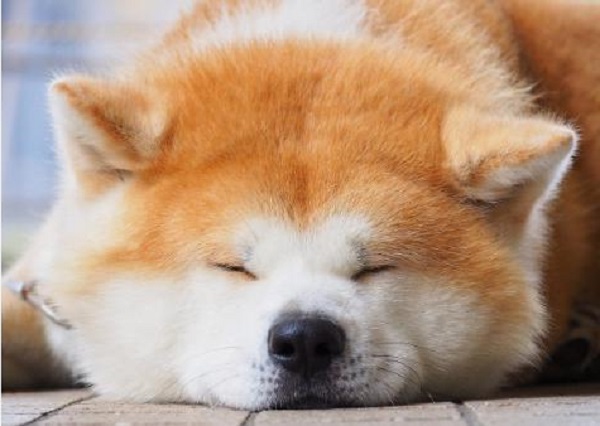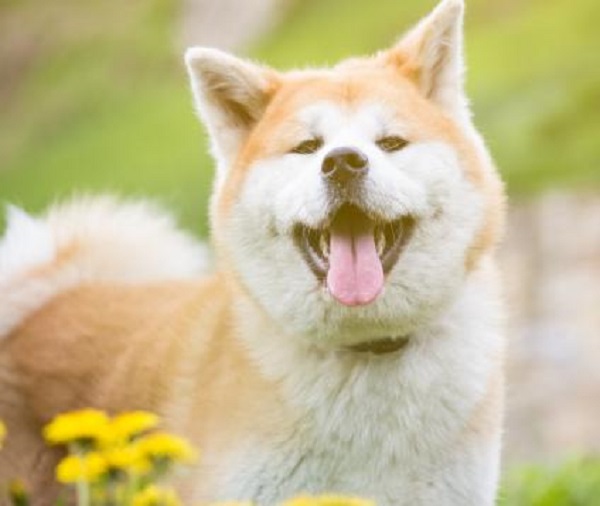Learn about the alluring Akita, a Japanese breed prized for its exceptional attractiveness and hunting skills. Akitas are loving and self-assured, with traits like their triangle ears and luxurious double coat. These devoted friends are a unique option among canine companions, with their engaging temperament and interesting information making them suitable for seasoned owners. Take a short look at breed insights as you explore the unique traits, temperament, and description of the Akita.

Akita dog brief information
Akita dog history
The Akita dog, a distinguished member of the ancient spitz-type canine lineage, traces its roots to the northern latitudes across the globe. The breed, as we know it, emerged in Japan’s Akita prefecture in the early 17th century, shaped by a disgraced nobleman’s encouragement of dog breeding for large, versatile hunting dogs. Initially exclusive to the imperial family, Akitas became formidable hunters, working in packs on game such as wild boar, deer, and the Yezo bear.
Akitas are a part of Japanese culture and are sometimes presented as miniatures to new parents as a sign of longevity and happiness. The creation of a Japanese national breed club in 1927 guaranteed the breed’s existence even though it sometimes faced extinction. International awareness of Akitas was aided by Helen Keller’s introduction of the breed to the United States and by its popularity among returning veterans of World War II. Its permanent position in canine history was cemented in 1972 when the breed was recognized formally in the AKC Stud Book.
Akita dog characteristics

Regarding appearance
The Akita is a striking breed with a distinctive appearance. Known for its robust build and noble demeanor, the Akita has a large, powerful frame. Their head is broad, featuring a strong, bear-like face and triangular, erect ears. Akitas boast a thick double coat that can be short or long-haired, providing insulation against various weather conditions.
Characteristic of the breed are their small, dark, deep-set eyes that convey a sense of intelligence and alertness. Akitas also have a curled tail, carried over their back, adding to their majestic presence. The breed exhibits a variety of colors, including red, brindle, and white.
In essence, the Akita’s appearance reflects strength, dignity, and a captivating blend of features that contribute to their unique and noble aesthetic.
Personality
The Akita breed is renowned for its courageous and devoted nature. Akitas are vigilant, clever, and brave; they are cautious around strangers yet loving toward family. They are perfect for homes with only one pet since they may get aggressive against dogs of the same sex. Akitas, who express themselves via sulks and sporadic barking, need a strict yet caring owner as well as frequent exercise to keep them from becoming bored. They need the right socialization and training to control their obstinate temperament as natural defenders. Akitas is essentially a symbol of bravery, devotion, and the necessity for a strong, kind leader.
Akita Size
Male Akitas usually weigh between 85 and 130 pounds and range in height from 26 to 28 inches. In contrast, girls typically weigh between 70 and 110 pounds and stand between 24 and 26 inches tall.
Akita Care

Because of their size, strength, and athleticism, akitas need frequent exercise and committed training. Given their propensity for heavy shedding, careful grooming is required. It’s interesting to note that Akitas behave similarly to cats, often washing themselves after meals.
Akitas dislike hot weather because of their thick coats, so owners need to watch out for symptoms of overheating.
Diet and Nutrition
Akita pups grow quickly, therefore it’s important to feed them a high-quality, low-calorie food to promote healthy development without going too fast. It is suggested that mature Akitas be fed twice a day, consuming three to five cups of dry food each day. Frequent weight growth monitoring is essential, and your veterinarian should be consulted for any special dietary requirements.
Exercise
Akitas benefit from a daily exercise regimen of at least 60 minutes since they have a reasonably high energy level; this may include two shorter walks or fast hikes. However, because of the possibility of violence, care should be taken while walking them at a dog park.
The Akita Club of America advises prospective owners to extensively research the breed before obtaining an Akita. Akitas stress the value of participating actively in their workout regimen since they are very loyal to their owners.
Grooming
Taking care of an Akita’s heavy shedding is necessary because of their double coat. Regular year-round shedding occurs, with two large coat blows that cause a large amount of fur loss annually. It is advised to use a vacuum on a regular basis to treat this.
Basic grooming is sufficient for Akitas’ normal maintenance needs. Regular brushing is crucial for maintaining the health of the coat and reducing shedding. Brushing should be done more often during the seasons when hair sheds the most. This grooming regimen controls the breed’s tendency toward losing hair and helps preserve the quality of the Akita’s coat.
Training
While they are renowned for their stubbornness and willfulness, Akitas are also very intelligent. As difficult as they are to teach, it is imperative that socialization and training begin at an early age to avoid overly cautious behavior toward the outside world. Akitas may exhibit reluctance in the presence of strangers and may find it difficult to get along with other dogs because of their strong pack instincts and hunting drive.
Use brief, fun training sessions that enhance the owner-dog relationship to keep the clever Akita interested in training. Keeping Akitas from being bored is essential because, if left alone, they might acquire bad behaviors. In order to solve this problem, recreation and exercise must be provided in excess.
Lifespan of Canines Akita
Akita dog price
Akita dogs range in price, although pups usually start at $1,000 or more. However, the price may go to as much as $4,000 for a purebred Akita from parents who have won events. Should you be lucky enough to come across an Akita that needs a new home, the expenses involved are usually far less than if you were to buy a puppy from a breeder. When thinking about getting an Akita, prospective owners should think about their spending limit and the source of the dog.
Does Akita get along with other animals?

When it comes to getting along with other animals, the Akita breed may provide some difficulties. In particular when interacting with youngsters, supervision is essential. Despite their reputation as devoted playmates and protectors, akidas may become dangerous for a child’s safety if they are abused.
It is essential to teach youngsters to treat Akitas with care and respect. Playtime with well-trained dogs still warrants adult supervision. Akitas are often a good fit for households with older kids. However, adequate training and constant supervision are crucial because of their propensity for chasing other pets and potential for hostility against other canines. Akitas are often best maintained in homes with only one pet to prevent any animal conflicts.
Akita Pros and Cons
When deciding if an Akita is the ideal dog for your family, take into account the list of benefits and drawbacks below to help you make an educated choice:
| Akita Pros | Akita Cons |
|---|---|
| Protective Nature | Profuse Shedding |
| Loyal Bond | Stubbornness |
| Bravery | Aggression Toward Other Dogs |
| High Prey Drive | |
| Intolerance to Hot Weather |
